#the way kui draws expressions
Text


Masterpost
#dungeon meshi#delicious in dungeon#dunmeshi spoilers#favourite anything from the series tournament#laios eating the winged lion's desire#laios touden#winged lion#the way kui draws expressions#ryoko kui
105 notes
·
View notes
Text
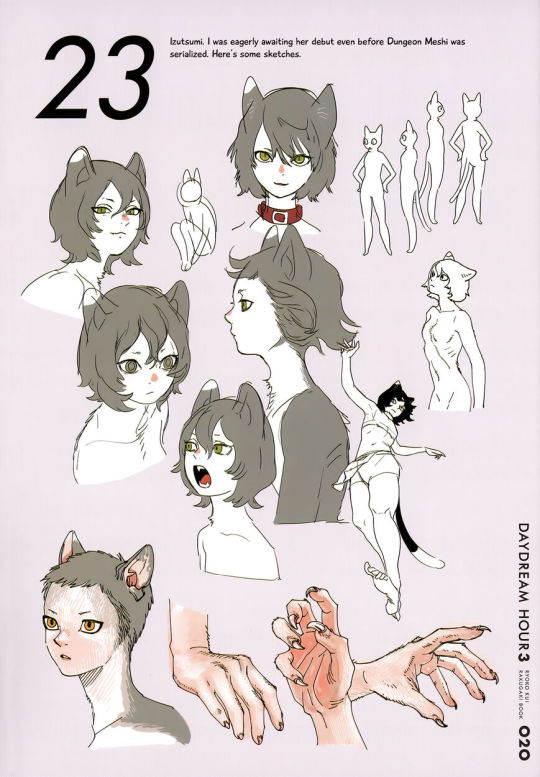
#the way ryoko kui draws faces and expressions and.....everything#i adore it so much#gotta start catching up on all these things#daydream hour 3#izutsumi#dungeon meshi#delicious in dungeon#ryoko kui#manga#mangacap
2K notes
·
View notes
Text

YAY FINALLY MEETING THE WINGED LION!!!! maybe ill get some answers finally
i still dont know whats this guys deal except that hes like a patron of the dungeon? but aside from that hes a total mystery to me. well maybe ill learn more soon!!
also. giga quad head marcille happened. not sure what to do w this info tho
currently at chapter 60!! god i love itzusumi so much...... i love all of them...........
#dunmeshi spoilers#im having a BLAST rn this is so awesome#i also started taking screenshots of panels i think are neat or funny to look back at l8r :)#god. something about the way ryoko kui draws animals is soooo good.... i want to absorb her artstyle so fucking bad#SHES SO GOOD AT DRAWING ANIMALS AND MAKING THEM BELIVABLE AND EXPRESSIVE AND GROUNDED#THE WINGED LIONS EPRESSIONS ARE SOOOO GOOD. GOD#also i love this panel and the next two. the winged lion is just so dissapointed and underwhelmed its so fucking funny#they werent lying this lion IS kinda cunty. havent reached the point where he has abs yet tho(<-that happened right?? or am i wrong lol)#he showed up in laios' dream and basically went 'you need to get your shit TOGETHER and fullfil the PROPHECY' and laios is just. so confuse
8 notes
·
View notes
Text
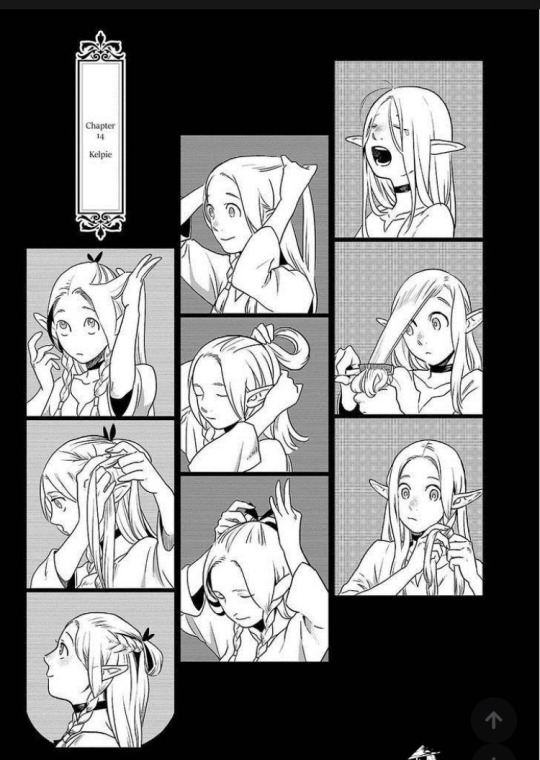
WHY IS SHE SO CUTE AAAAAAAAAAA
3 notes
·
View notes
Text
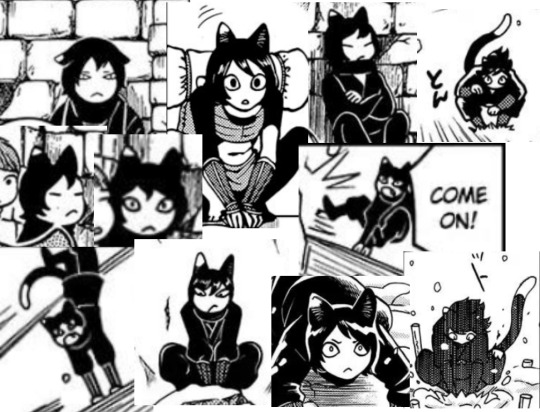


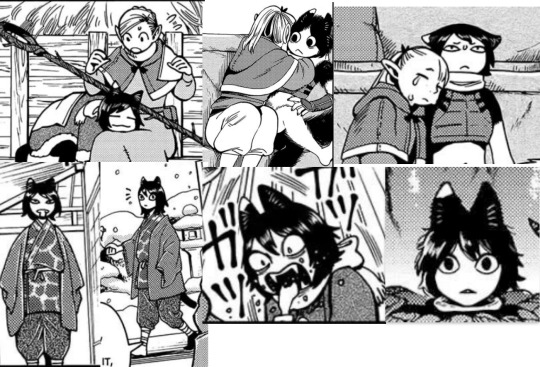
my beloved Izutsumi i love you more than anything in the world
#dungeon meshi#i just love the way ryoko kui draws the characters facial expressions#especially izutsumi and especially izutsumi in the backgrounds
1 note
·
View note
Text
Evidence that Kabru from Delicious in Dungeon is Indian, a Masterpost
(Some of this info is taken from my upcoming essay about the names and cultural origins of all the characters in Dungeon Meshi. There's a link in the source to the AO3 version of this essay.)
Since Kabru’s first appearance in the anime is upon us, I wanted to write something that compiles all the evidence we have that Kabru is meant to be a person of South or Central Asian ethnicity, or at least whatever the equivalent to that is in the Dungeon Meshi world.
Ryoko Kui can and does draw people of many different ethnicities, and the way she draws Kabru matches the way she draws other Asian characters in Dungeon Meshi. He doesn’t look Black, or Hispanic, or any other ethnicity because he isn’t supposed to. He looks like a dark-skinned South or Central Asian person, because that’s what Ryoko Kui probably intends him to be.
So let’s go through the evidence!
(There are no spoilers for the plot of Dungeon Meshi below, but there ARE spoilers for Kabru's backstory as explained in the manga, and in extra materials like the Daydream Hour and Adventurer's Guide book.)
KABRU’S NAME
The Dungeon Meshi Adventurer's Bible tells us Kabru’s real name is unknown. There are other characters whose real names are only told to us in the Adventurer's Bible and were never revealed in the manga, but then Kabru, Thistle and Izutsumi’s entries simply say their real names are unknown, and though Kui could tell us their true names, she doesn’t. I assume this means that the characters themselves don’t know what their real names are, and that the names they go by are not their birth names, but this is only a supposition on my part.
KABRU THE MOUNTAIN
Kabru (काब्रु) is the name of a mountain on the border of Nepal and India, and part of the Himalayan range. It’s the 65th tallest mountain in the world and it is very snowy and icy, with frequent avalanches. Because of this, even though it’s not the tallest mountain in the world, climbing it is challenging, and is not often attempted. Those few that have managed to climb it consider it a major achievement.
“This prohibitively fearful icefall… had thwarted numerous expeditions, perhaps even the 'thought' of attempting the mountain… Unstable seracs of the icefall, a complex maze of chasms, and delicate snow bridges spanning seemingly never ending, near bottomless crevasses… Each time the members stepped into the icefall, they stood a good chance of never returning.” (Kabru - Mountain of the Gods, Major A. Abbey, Himalayan Journal 52, 1996, editor Harish Kapadia)
WHAT DOES KABRU’S NAME MEAN?
Kabru is a character that is known for being very good at charming people, but who doesn’t express himself honestly, because he’s trying to manipulate the people and situations around him in order to maintain control at all times. I think nobody really knows who Kabru is deep inside, maybe not even Kabru himself, so a remote, hostile, icy mountain that’s hard to climb seems like an extremely appropriate name.
Some of the oldest English sources I found regarding Kabru suggest that Kabru isn’t the correct local name for the mountain (a common problem in early Himalayan exploration by Europeans) and might just be a descriptor, or that it’s a misspelling.
This makes the name seem even more appropriate, since Kui’s told us Kabru’s true name is unknown. It’s possible that Kabru was a place-name or a descriptor that Milsiril (Kabru’s elven foster mother) was given when she picked up a traumatized 7 year old Kabru, and she just started using it as his name, and that even he doesn’t remember his real name thanks to his severe trauma.
The fact that people in the real world can’t seem to agree on the mountain Kabru’s name, or what it means, reminds me of the running gag of Laios repeatedly getting Kabru’s name wrong in the manga.
"All the people near the Kabru massif call it 'Kaboor'." (The Alpine Journal, 1921-22 Volume 34, Edited by George Yeld and J. P. Farrar)
“It is also said that the name applies to a peak close to Kinchinjunga on the southeast, and not to the peak known to Europeans as Kabru… [The real name is] Pahung Ri [Pauhunri].” (Appendix I: Place Names in Darjeeling. The appendix says it was “compiled mainly from an article written by Colonel Waddell and published in the Journal of the Asiatic Society of Bengal (Vol. LX, part I, 1891)”)
“Kangchen is a Tibetan name… the Sikkhimese use it as the name for the peak called Kabru by Europeans.” (Charles Bell, Dyhrenfurth's Himalaya (Berlin, 1931))
“...Kyabru or the horn of protection. The name is… Kabur… possibly a corruption of Kangbur or the swelling of snow; it might also mean the white swelling (kar-bur).” (Appendix I: Place Names in Darjeeling.)
“Kabru literally means the 'White Avalanche' peak (Ka means 'white' and bru means 'avalanche').” (Kabru - Mountain of the Gods, Major A. Abbey, Himalayan Journal 52, 1996, editor Harish Kapadia)
I’ve seen one other mountaineering article cite the “white avalanche” meaning, and I think it’s plausible since the Appendix says it can mean “white swelling” or “swelling of snow”, which may very well be a literal translation for “white avalanche”.
WHAT ABOUT UTAYA? IS THAT INDIAN TOO?
Utaya means “raised” or “uplifted” in Hindi, but it’s also a real village and a Japanese boy’s name.
Utaya (ウタヤ) is the name of the village that Kabru was raised in before his mother died and he was adopted by the elf Milsiril. Utaya is located in the southeast of the Western Continent. It’s worth noting that Kabru probably wasn’t born in Utaya, since his mother had to flee from her home to keep Kabru alive, so Utaya may be some distance away from his birth place… Not so far that a woman with a newborn baby couldn’t survive the trip, but far enough that her husband’s family gave up on chasing her. So Kabru was probably born in a close-by area.
In the real world, Utaya (Yakut: Утайа) is in an extremely rural and isolated area with a population of less than a hundred people. It’s located in the Sakha Republic, which is in the Northeastern part of Asia in the Russian Federation. The Yakut/Sakha are a Siberian Turkic people.
The Turkic peoples are a collection of diverse ethnic groups of West, Central, East, and North Asia as well as parts of Europe, who speak Turkic languages.
Early and medieval Turkic groups exhibited a wide range of both East Asian and West-Eurasian physical appearances and genetic origins, in part through long-term contact with neighboring peoples such as Iranian, Mongolic, Tocharian, Uralic/Yeniseian peoples, and others. Turkic peoples share, to varying degrees, non-linguistic characteristics like cultural traits, ancestry from a common gene pool, and historical experiences.
JAPANESE MEANINGS FOR UTAYA
Utaya can be a Japanese boy’s name with several different meanings, depending on which kanji it’s spelled with.
In most of the spellings: Poetry, sing a poem, singing, compose poetry
In many of the spellings: The place where the sun shines, it's been a long time, distant, big, to shoot with a bow, to swear, affirmation, question.
The Utaya disaster happened a long time ago.
If Utaya is up in the mountains above the clouds it’s a place where the sun shines brightly.
Kabru has sworn to himself that he will prevent another Utaya tragedy from happening.
In only a few of the spellings: to mend, feathers, wings, a word for counting birds and rabbits, sort them out, washing with water to separate the good from the bad, roof, house with a roof, a world covered with a big sky, infinite space, song that praises the Buddha, Eight.
Counting birds and rabbits makes me think of divination and also that the people of Utaya were like little birds and rabbits (small prey animals) to the monsters that devoured them.
Separating the good and the bad could hint to the “judgment” of Utaya and the greed of its people that led to their downfall, also sorting through things to separate good and bad is something that’s done with food and other resources.
The Himalayan region is often referred to as the “roof of the world”, with a big open sky above it.
The infinite could refer to the dimension the demon comes from, or to the sky above the mountains.
Buddhism is a common religion in the Himalayan region, and eight has auspicious connotations in Buddhism.
With all that in mind, Utaya as a name for Kabru’s home village is an interesting choice, and adds another layer to his origins, maybe suggesting not just North Indian/Himalayan, but Central or North Asian cultural influence as well.
It is also possible that the name is just telling us that Utaya is “up” in the mountains, or that it was “uplifted” by the wealth of the dungeon, or even that Kabru was “raised” there… The Japanese name meanings are also extremely fascinating and hint at similar ideas, as well as the tragedy that happened to Utaya.
WHY ELSE DO YOU THINK KABRU AND UTAYA ARE HIMALAYAN?
In the real world, the Himalayan mountain range is an extremely popular tourist destination, and the amount of people who want to visit and attempt to climb the mountains far outpaces the local ability to support it. This makes me think of the dungeon of Utaya and how people overcrowded it in their desire to conquer and exploit it.
Dungeons as an unsustainable way for locals to make a living that leads to the destruction of their homes when the dungeon inevitably collapses is a major plot point in Dungeon Meshi, so I think the parallel is likely intentional. Characters often talk about someone “conquering” the dungeon, and “conquer” is also the terminology commonly used for climbing a mountain. This terminology obviously has a hostile, imperialist subtext in the real world, since it’s most commonly used by outsiders talking about proving their strength by climbing a mountain.
Also, there are local legends in the areas surrounding Mt. Kabru that there is a valley of immortality hidden on its slopes, which reminds me of the way that the dungeons can grant conditional immortality to the people inside of them.

This image of Utaya could be showing us a village built on a mountainside. The house shapes seem a bit more Middle Eastern than Nepali/Indian, but it’s not a detailed drawing and the roof styles are a mix of flat and peaked.
CULTURE
In the Daydream Hour sketchbook, Ryoko Kui included a small comic about characters sharing desserts from their home countries. A young Kabru is shown enthusiastically trying to share an unnamed sweet, and he is interrupted by his elven foster mother, who insists he present a type of elven cake instead. We know that Kabru hates this type of cake, and he seems disappointed to have to eat it and talk about it.

The white balls in Kabru’s dessert are very likely meant to be an Indian sweet called rasgulla (literally "syrup filled ball"). Rasgulla are a dessert popular in the eastern part of South Asia, made from ball-shaped dumplings of chhena dough, cooked in light sugar syrup. While it is near-universally agreed upon that the dessert originated in the eastern Indian subcontinent, the exact origin is disputed. Rasgulla are as culturally important to the Bengal and Odisha regions of India as Parmesan cheese is to the region of Parma in Italy.
Rasgulla are also popular in Nepal, where they are called rasbari.
KABRU’S PHYSICAL APPEARANCE

Kabru is one of several characters in Dungeon Meshi with clearly non-European features: he has brown skin and thick black/dark brown curly hair. He has almond-shaped eyes with long, dark lashes (fans like to joke that he’s wearing eyeliner). All of these are traits common to people from the Indian subcontinent. His blue eyes are not common for someone with his skin/hair color, but blue or green eyes are not unheard of in that region either.
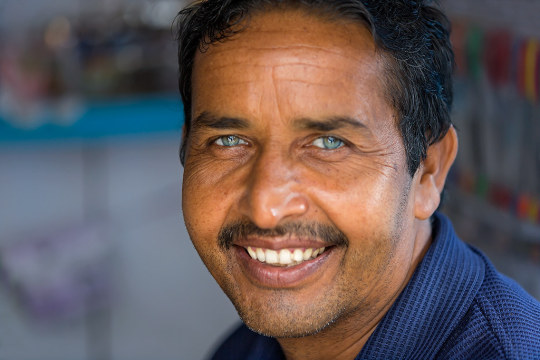
(Indian man with blue eyes)
Blue or light eyes are often a cause for discrimination, like what Kabru experienced as a child. More on this in a moment.
Kabru is 5’7” (170cm) tall, which is short for a Northern European man (180), tall for a Nepali man (162cm), but close to the average height of Indian men (177cm). He has a slender build, which is also common for Asian people in general, and South Asian men in particular.

Compared to the European-looking tall-men in Dungeon Meshi (such as Laios, Falin, Delgal, Marcille’s father), Kabru’s facial features look more like the other Asian characters, such as Toshiro and his party.
CAN DARK-SKINNED PEOPLE HAVE BLUE EYES?
Yes. Light-colored eyes are very uncommon in parts of the world where most people have dark eyes, since dark eyes are a dominant trait in real-world human beings. That means that in order for two parents with dark eyes to have a child with light eyes, both parents need to have a recessive light-eyes gene (or for there to be an illness or genetic mutation), and that’s rare in populations that don’t have a lot of light-eyed people to begin with.
THEN WHY DO SO MANY DARK-SKINNED CHARACTERS HAVE BLUE EYES?
Anime and manga often give characters with dark skin light colored eyes instead of allowing them to have brown or black eyes, which is much more common in real life. It’s a hurtful design trope that makes many readers feel that their natural dark eyes are somehow ugly or inferior to blue eyes.
This trope is used over and over again by authors who want their characters to look “cool” and “exotic”, and for their eyes to be high-contrast to make it easier to show their emotions.
I don’t think this is what Ryoko Kui is doing in Dungeon Meshi.
UNREALISTIC HAIR AND EYE COLOR COMBOS IN ANIME
In a lot of anime/manga, blue eyes (regardless of skin color) don’t actually mean anything in the narrative, in the same way characters having green or pink hair doesn’t mean anything, the colors are non-diegetic, they don’t actually exist in the world, like the music that plays in the background without an on-screen source.
It’s an artistic shorthand to make characters visually stand out, instead of giving them all black hair and eyes like most real-life Japanese people… Which is what most anime/manga characters are meant to be: Japanese people.
Dungeon Meshi has a large cast of characters that are explicitly meant to be non-Japanese. We know this because there’s a group of characters that are Japanese, and they’re drawn differently from everyone else, they wear ethnically Japanese clothing, and have ethnically Japanese names.
Unlike other series, where eye and hair color don’t mean anything, Dungeon Meshi has no unrealistic skin, hair, or eye color combinations.
(Except for the elves, who seem to have different genetics than real world-humans. I’ll get into that another time.)
Ryoko Kui must be aware of the dark skin, blue-eyes design trope, because if she gave Kabru blue eyes just because she thought it looked good, surely she would have made some of the other Asian or dark-skinned characters have light eyes. Out of 9 Asian or dark-skinned tall-man characters, Kabru is the only one with blue eyes.
Kabru having light-colored eyes is central to his story, and Kui talks about it.
KABRU’S STORY AND WHY HIS BLUE EYES MATTER
Kabru’s father and his family tried to kill Kabru when he was born because he had blue eyes. Kabru’s mother ran away, and ended up raising Kabru by herself in Utaya. She didn’t try to return home to her own birth family, but instead struggled to raise a child completely on her own with no money or support, which implies she had no other options, due to the fear people of their region have for people with blue eyes.
This is a real thing that used to happen frequently in areas where most of the population has dark eyes, and it still happens to this day.
In a realistic story, this is logically what would happen to a character with dark skin born with blue eyes in a place like the Utaya region. It’s rare for manga or anime to show dark-skinned blue-eyed characters facing this.
WHAT IS THE “EVIL EYE”?
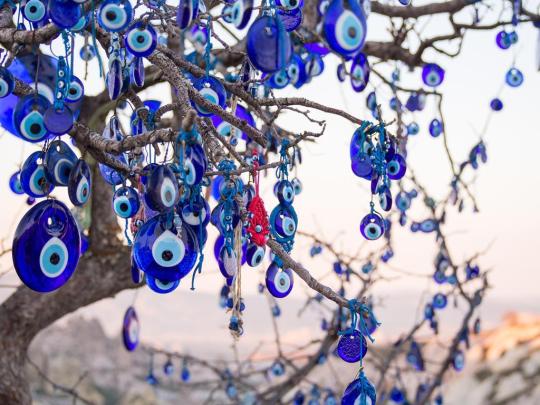
The “evil eye” is a supernatural belief in a curse brought about by a person looking at you. The belief in the evil eye has existed since prehistory, as long as 5,000 years ago. It is estimated that around 40% of the modern world's population believes in the evil eye. This concept is most common across the Mediterranean, the Balkans, the Middle East, and Central and South Asia, areas where light-colored eyes are uncommon.
In areas where light-colored eyes are rare, people with green eyes, and especially blue eyes, are thought to bestow the curse, intentionally or unintentionally. Just one look from a blue-eyed person is often considered enough to inflict a curse.
One of the most famous and widespread talismans against the evil eye is the nazar, a glass amulet featuring concentric circles in dark blue, white, light blue and black. It’s supposed to “bounce” the curse away from the wearer.
HOW DOES THIS APPLY TO KABRU?
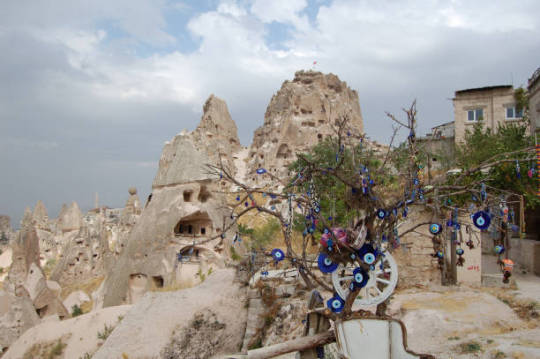
Imagine Kabru growing up in a village surrounded by people wearing and hanging talismans that look like his eyes, because the people around him think blue eyes are evil. They call his mother a witch for birthing him, and a whore because she doesn’t have a husband. Imagine parents forbidding their children from playing with or even talking to Kabru. People crossing the street to get away from him, or chasing him away by throwing rocks.
I think the reason young Kabru was able to learn how to speak some kobold is likely because he was so heavily ostracized by the other tall-men around him, the only children he could occasionally interact with in Utaya were kobolds, who might not share the same cultural superstitions that the tall-man do.
This childhood trauma, combined with Kabru’s experience of the dungeon collapse in Utaya, and being raised by an elf that treated him more like a pet than a human being, set Kabru up as a character who has never had a home where he belongs. He has been an outsider from the instant he was born, and every place he has lived treats him as an “other.”
To his father’s family, he was a curse. To his mother, although she loved him, he was a burden. To the people of Utaya, he was a monster. To the elves, he’s a tall-man baby (no matter how old he gets) with funny looking eyes, to the people on Merini Island, he’s a foreigner from the West with elven ways and education.
CONCLUSION
I wanted to write this because I know some people will see Kabru in the anime for the first time today and think "Oh, another dark skinned blue eyed character! This is a bad character design that is evidence that the author is racist at worst or ignorant at best.” And I don’t think that’s a fair assessment of Ryoko Kui’s work in Dungeon Meshi.
This isn’t to say that Ryoko Kui has never done anything wrong, or that her work couldn’t be more inclusive, or that there’s no way in which she could improve.
But there are pages and pages of artwork she’s done that shows she cares about these issues, and I think it’s worth celebrating when someone makes that kind of effort with their artwork.
ANYWAY…
If you’ve read this far, you’re very strong hahaha. I hope you enjoyed this essay. I’ll be publishing more soon when I finish my Dungeon Meshi research on the names and cultures of all the characters. Wish me luck!
1K notes
·
View notes
Text
hope people who are anime only for dungeon meshi will consider also picking up the manga cause nothing can compare to the way ryoko kui draws literally anything. the compositions, the expressions, the designs.
she is so great at sudden tonal shifts and character interactions that i feel can be truly appreciated only in her original work. like some serious mind rearranging stuff. please read dungeon meshi
349 notes
·
View notes
Text
Ryoko Kui's Daydream Hour

I am moving at a glacial pace with tidying up and editing the images of this art book, so I'm going to take a break and talk about Kui's incredible character design on Delicious In Dungeon, using elves here as an example
So, first of all, race-defining traits. With the elves, it's obviously ears as the first. But, Kui plays around with that far more and in an incredibly natural way. The size of their ears differs, the angle at which they protrude from the side of the head can be different, their rotation in terms of where the opening of the ear faces can change, and even the "pointyness" is unique to each elf.
It creates incredibly varied views and "styles" of elf within the world, and complements a lot more of the physical traits that reflect ethnicity in our world.
Take, for example, the hair of elves. In the vast majority of cases it remains blonde or silver/white, and is straight. As you can tell with some of the images, it's not always smooth or silky like some exhibit, but in the vast majority of cases, for elves that are pure elves, their hair is straight (potentially with some shape/volume as you can see with the gray-haired elf with green markings on their face).
Similarly, elves are shown to have characteristically blue or green eyes. Which begins to draw your attention towards an outlier.

This elf. The one with purple eyes. Immediately, you might think "oh, they must only be part elf", but Ryoko Kui was only laying a trap with that idea. This elf is certainly 100% elf, it's just that they exhibit traits that are heterogenous to how Kui's defined elves as a race.
The biggest outliers being the purple eyes, but then also the ears. Here's the thing though, there's not a race that strongly exhibits purple eyes throughout Ryoko Kui's work on Delicious In Dungeon. It's just that elves exhibit strong homogeneity in regards to eye color. A similar thing can arguably be said about the ears which may make viewers think something's up. They're certainly the smallest of the bunch, and the most rotated, but other elves also see aggressively rotated ears, just not to the degree that this one does.
If you want to talk about how the traits of elves mix with that of other races we actually have two examples. Marcille Donato, obviously, as a half elf and half tall-man, but also this other blonde woman with blue eyes.
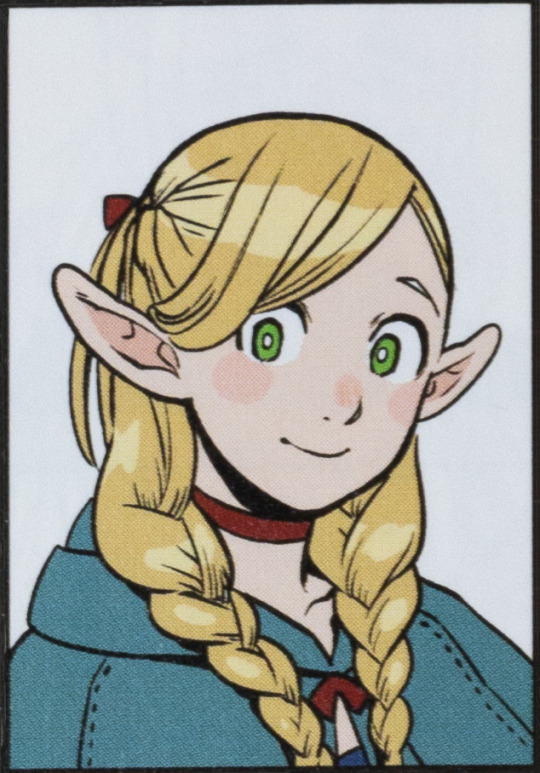

We know of Marcille's heritage so let's focus on the woman on the right. The first thing that you notice as a heterogenous is her hair: it's wavy. It's a trait that's very much separate from Kui's depiction of elves. Similarly, the shape of the eyes betrays that much more narrow and sharp style.
Then there's also the ears, which are larger, noticeably shorter, more round, and most noteworthy are thicker.
With that last piece I'm sure many are thinking, "Oh, she has to be half Gnome!". Yes, the shape and size of the ears does very much fit Kui's style of Gnome (as does her height, I'll say more later), but let me show you a (bad and unedited) image of how Kui draws gnomes.

Their eyes are far more slanted and downturned. It's a very strong trait of the Gnomes, alongside their very prominent noses and hair that isn't noticeably curly or wavy.
So no, it's not Gnome, and I wouldn't say it's Dwarf either. My guess is that this woman is part half-foot. The smaller stature (yes, the headshot shows that she's shorter than the other elves), the curly hair, the shorter yet more prominent and thicker ears, the rounder eyes, it all speaks to similarities expressed by Half-Foot characters.
And I think that's really incredible. It's just a wonderful highlight of how thoughtful and creative Kui is with their character design, and how unique they're able to make a race.
At a glance, you can tell who's what, but they don't all look the same by any means.
That's something that's really driven home with Ryoko Kui's Daydream Hour, and something I really want to talk about more. Though, as you can tell, I've got a lot of work ahead of me to get images that are actually good and presentable, so we'll see when I'm able to squeeze out a proper post.
#ryoko kui#daydream hour#delicious in dungeon#dungeon meshi#dunmeshi#marcille dunmeshi#marcille dungeon meshi#marcille donato#delicious in dungeon marcille#anime art book#anime art#manga art book#manga art#anime and manga#anime#manga
153 notes
·
View notes
Note
im not sure if anyone asked you yet, but thoughts on the dunmeshi anime?
thanks for asking! sometimes i forget i exist here as a person cuz i just log on to queue random stuff without making posts 💀
it's pretty rare for me to watch an anime without ever reading the manga, and there've been stellar adaptations recently. ONK, kisekoi, BTR, frieren, CSM just to name a few. in a landscape where we're used to being disappointed as readers who have a frame of reference before watching a show, i had very, very high hopes for the dunmeshi adaptations that weren't quite fulfilled.
i'll dump everything under a cut since i actually have a lot to say, sorry if you were expecting it to be brief 😎
the lines in the artistic style are good, nicely translating the characters into animated format. really no notes there. definitely a nicer comparison for char designs between manga and anime vs. tonsuki and tensura who both have incredible manga styles that the anime stumble over (though in the latter's case, i don't think they were aiming for it sadly)
the shading has been fine, but weakened by the colour choices. some of the dungeon scenes (e.g., living armour stuff) are lit with a medium blue which helps to sell the idea of the scene being in a place not lit by fire (and contrasts it with the making camp & cooking scenes), but the lack of dark shading flattens some of these very well-drawn images.
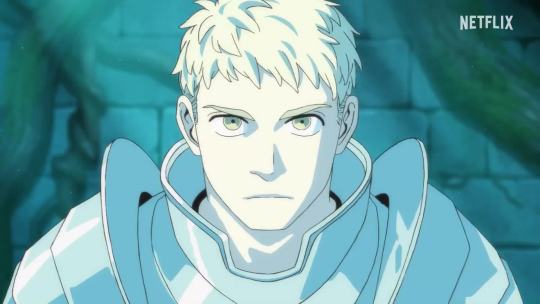

the earlier chapters don't have the same level of detail as newer ones, but the art style is still fantastic - it's expressive with high contrast and shows action and impact perfectly well. manga will often times have a naturally easier way with contrast due to it being in black & white, but i don't think that means anime should just give up on contrast in favour of playing ineffectively with colour.

here's a night shot of fern from frieren. the choices made here allow for the shading to stand out from the flats and give her more definition overall while still being relatively simple (just flats + shading)

when dunmeshi has more "normal" lighting conditions, it does a lot better. similar to fern up there, there's about the same amount of difference between the flats and shadows, so i really wish they did a better job on the dungeon scenes since they're going to have to deal with non-torchlit scenes plenty. i won't argue that the living armor scene certainly has some kind of a sickly, alien mood to it, but tl;dr i think it should've had darker shading if not also being less green. this largely applies to every other blue-green lit scene they've done.
looking at kui's coloured drawings in the ed gives me an idea of what could've been and it makes me sad to lose out on colour choices more similar to that (even if they obviously can't have her level of detail on top of it)
some of the backgrounds haven't been too interesting but some have been good, overall it's probably fine. plus you can only draw and detail repeating bricks so many times before the viewer gets bored of looking at them anyway, i guess.
the animation is really fun and expressive. it's trigger, so they don't keep scenes stiffly on-model when they want characters moving around. this is good because it helps to sell both action and comedy moments!
the music overall i haven't really cared for? the BGM has not been particularly moving, interesting, or memorable - mostly generic. and i've seen too many fantasy shows for my own good, so i might be harder to impress (but i even remember tenken had a good BGM song or two to make a fight dramatic and that show was barely above average at best)
i'm biased not being particularly into bump, so i would've selected a different artist for the OP (i actually did like the bump OP from SxF though, come to think of it). before anyone makes a wisecrack based on what i've watched lately, no it doesn't have to be yoasobi.
i maybe feel the ED song would've been better for the OP, i don't like the largely peaceful bit of the OP with very still visuals. the OP is where you reel people in! it should be an eye-catching hook, representative of what to expect with some extra sauce on top.
the ED is great, total bop. it's a fine time for slower visuals as an enjoyable wind-down from the episode, so less or no animation is no big deal. plus kui's art is absolutely gorgeous! it all perfectly fits that "end of work" fun and lighthearted mood they were going for.
i largely enjoy the voice acting. i would've personally gone for a less "old man" voice on senshi because he's really not that old for a dwarf, but they obviously wanted to make it clear he was the older, wiser, knowledgeable character.
this might be my own personally most blasphemous opinion, but i would've picked a different VA for falin. i want to make it clear i absolutely adore saori hayami - she's incredible and one of my faves. with that said, her voice fits the character, so maybe it's just because i've heard her too often which is not her fault by any means! i love the voices for laios, marcille, and chil.
it seems netflix's subs go off of the official EN TL of the manga, which makes sense, but i've talked about how i don't like it more than ehscans' TL (which is one of the single best TLs i've read for a series, official or otherwise) and that holds true for the anime ("mad sorcerer" is cooler AND less clunky than "lunatic magician"). i prefer less localisation stuff and/or quirkiness in my subs and more direct translation for both manga and anime.
as for the changes/additions they've made to the show, some of them have been alright and some i didn't care for. they really want to sell marcille as the funny joke character which is why they had her being chased by the basilisk instead of having doni & fionil like it was in the manga which was better for the pacing and had good impact vs a funny clip of marcille running back and forth.
i don't dislike when adaptations add or change stuff, but placing them cleanly is important. dunmeshi is already really funny! i don't think it needs help being funnier by reaching for the cheap laugh. when laios sees two people running for their lives from a basilisk and he just goes "wow that's a bad way to run from that monster", it's already lowkey hilarious - all the more so followed by marcille telling mr. monster-know-it-all to go rescue them if he knows what's up and him rescuing them by making himself big and chicken squawking real loud (which embarrasses marcille and chil, but c'mon guys, at least his idea worked!). i feel like the comedy in laios' funny hero moment is undercut by forcing the marcille butt of the joke moment in the anime.
dunmeshi is already incredibly good at just about everything it does. i feel if an adaptation wants to add or change something, it's often better amplifying a strength or shoring up a weakness in the source material. BTR adds a lot to the source (not hard considering the source is a 4koma) and makes already funny things even funnier. the "we should all get social media" scene is elevated to iconic status with the visual of bocchi glitching out + the VA's inhuman screech. i can't say where i'd really want to change or add stuff to dunmeshi, since it really feels so good and whole, but i'm sure there's room in the process of translating manga panels to animated scenes, and i think the direction overall could've been better (comparing most shows to BTR isn't fair i know because BTR is directed & adapted so well it's hydrogen bomb vs. coughing baby territory)
i've mostly said negative stuff, but i don't want it to sound like i hate or even really dislike the adaptation. i think when it comes to a series you really love, you want to see the best adaptation possible within reason, and the disappointment of stuff not being quite what you were hoping for is amplified by so many other recent adaptations being so good.
dunmeshi does not have a bad anime by any means, but a lot of that is thanks to the source material's quality. if they do another season, i hope they have more time/budget/whatever because i think a lot of the parts it does have are good parts! but in this case, i wasn't hoping for good; i was hoping for great.
trigger makes great shows with wacky storylines (in some ways, the same one wacky storyline, but that's a different discussion) and dunmeshi, being directed by someone who's worked on a bunch of trigger stuff (largely sci-fi leaning), maybe needed some more direction from people who've worked on fantasy stuff? i can't say for sure what would've been enough to take the show over the top, but though i generally don't hope for much from adaptations, i really did have higher hopes for this one than it ended up achieving.
overall it seems i'll end up scoring the show a 7 or 7.5 when i finish the season, though there's certainly still room to wow us all. whatever you feel about the adaptation, whether you liked it or not, whether or not you've read the manga, feel free to comment your thoughts below or in my inbox. let's keep it free of manga spoils for anime-only watchers, though!
#sorry this is REALLY long#ask answer#anon#i've been busy with TEA in ffxiv but i'll try to post more!
10 notes
·
View notes
Text
Unghhhh and once more I think it's a testament to her artistic skill that the way ryoku kui draws the lion still looks like laius but he can't get the expressions right. They don't sit naturally on laius' face. They're not expressions he would make. It looks unnatural. But he still looks like laius. And I think it'd be enough to fool anyone who didn't know him well
76 notes
·
View notes
Text
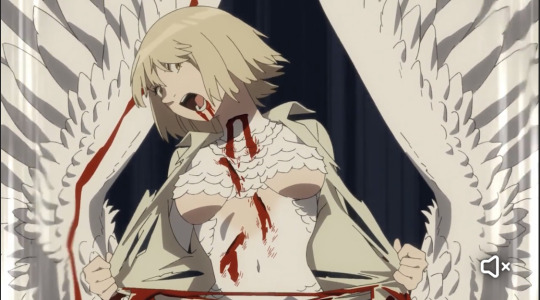

idk. this is just a lot less visually compelling to me. i don't really like the changes they made to the expression and again idk why her waist is the same size as her head. i'm not saying ryoko kui draws falin as actually fat bc she's just a medium weight really but like. there is such an extreme difference here. also in general i feel like it feels less violent in the animation? which you would think would be the other way around they could really do a lot by putting this moment into movement. really play up the wild and animalistic expression on her face and stress the amount of sheer force she is exerting when she rips the shirt. idk!!!! i don't like this. whatever!!!!!!
3 notes
·
View notes
Text
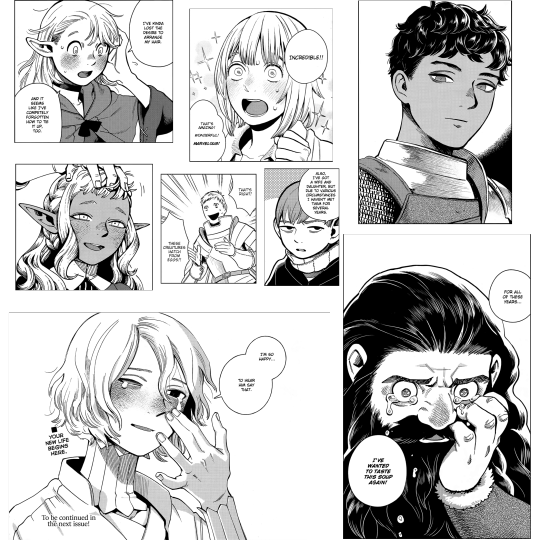

Masterpost
#dungeon meshi#delicious in dungeon#dunmeshi spoilers#favourite anything from the series tournament#the way kui draws expressions#ryoko kui#chilchuck and his daughters' halloween costumes#chilchuck tims#mayjack chils#fullertom chils#packpatty chils
39 notes
·
View notes
Note
2, 6, 22, 25! (for those artist asks)
artist asks ough this got l o n g
2) 5 favorite works of your own?

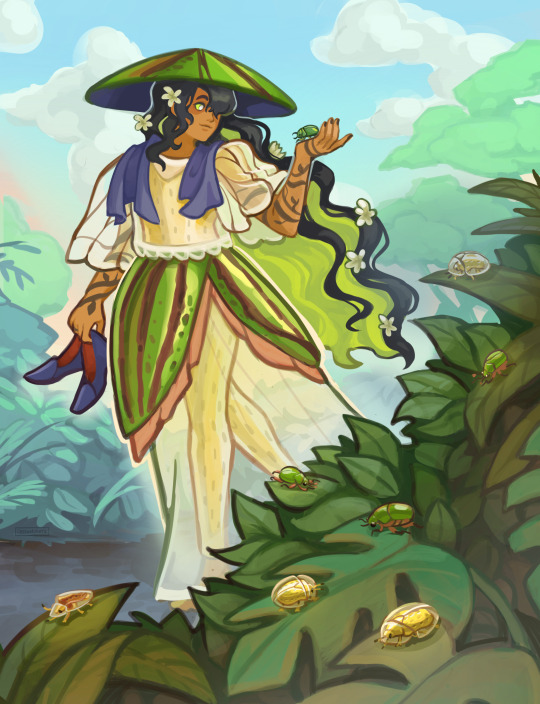
1-2. After being in a slump for so long and not being able to finish full pieces, I'm really proud I managed to push through with my entries for Rose Magazine! I really enjoyed trying make insect themed clothing inspired by Barong tagalog (though most of it is hidden ;w;) and Baro't saya.
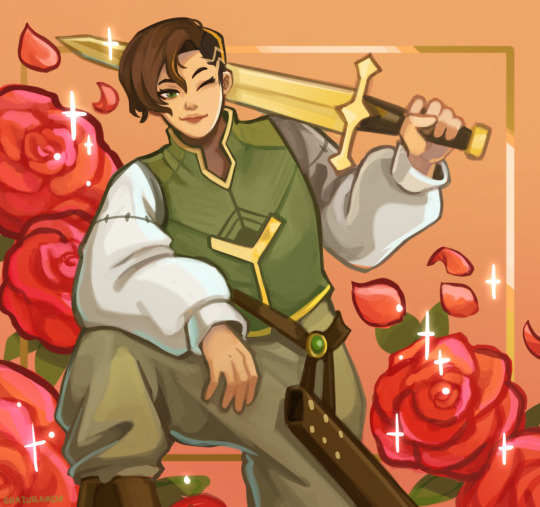
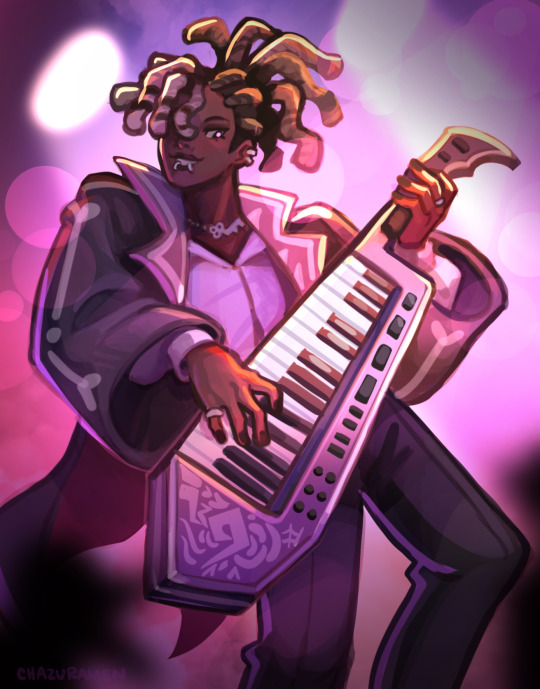
3-4. These drawings I did for this year's artfight! (Olive belongs to Maizemaze and Preston belongs to U3pxx. Used this year's AF as a way to experiment with my process a bit and really liked how these ones turned out (cleaner rendering with olive and fiddling with lighting with preston)
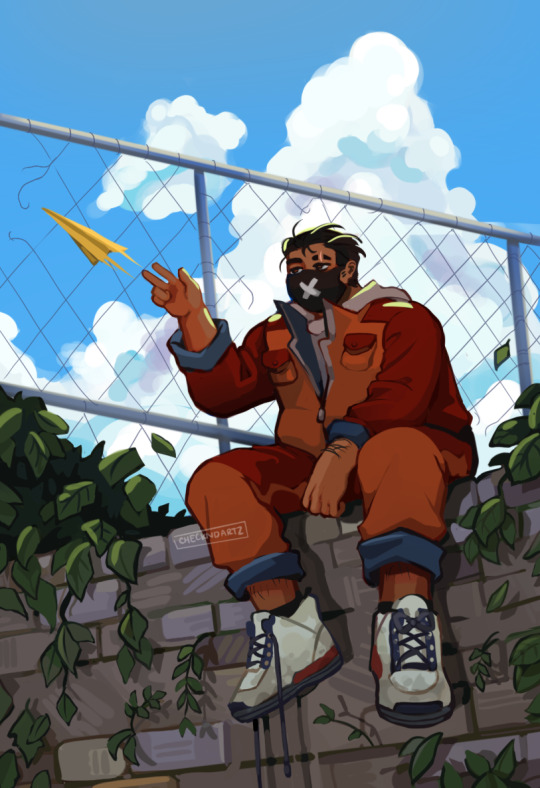
5. Oldie but but goldie (to me,,) this is where I really wanted to start pushing myself to do bigger illustrations.
6) Which artists inspire you right now?
Hoo boy a lot, I can think of a lot of artists with all different types of styles with all different types of reasons. I tend to lean towards artists who do character design and narrative illustration. Off the top of my head though, these are who I can think of at the moment!
Ryoko Kui

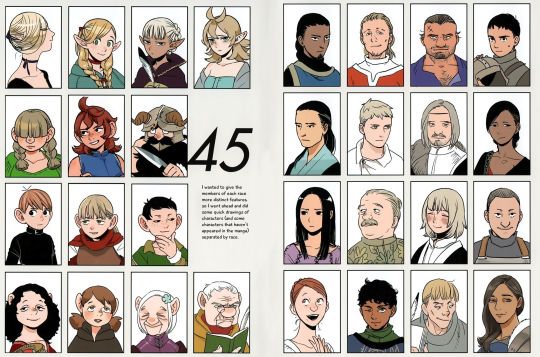
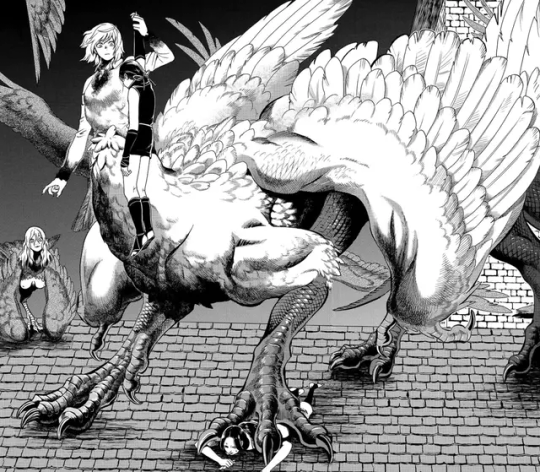
Where to begin??? Everyone knows her character design is *chefs kiss* just gorgeous, but i also love the way she draws food, dunmeshi's panels (especially anything involving Falin) and the way she draws expressions (especially Marcille's reactions to the party's shenanigans)
2. Vivian Ha (TWT/ Tumblr)
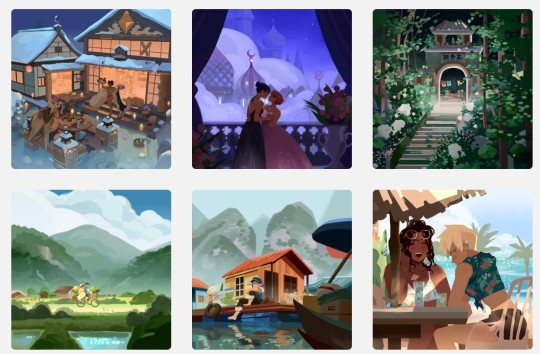
ahh man they've been such an inspiration to me for such a long time, i think i found out about them around 2016? their linework and the shapes in their work are so fluid, and their coloring is so so soft
3. Tan Jiu ( IG / Twt)

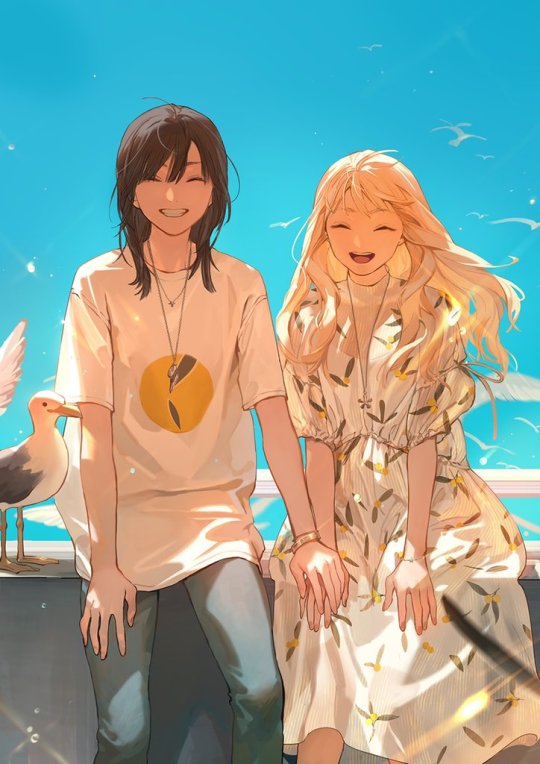

Tamen de Gushi my beloved. There's something about their colors, the way they draw their characters interact (aside from sun jing and qiu tong, I also really love sun jing and mophead's dynamic, the way they draw their expressions are so funny) and just the warmth and coziness from their illustrations with sun jing/qiu tong. fills me with utter joy
4. Lyoo_lyoo (IG / Youtube / Class101)

Lot of pretty boys in this one, I found them through one of their speedpaints on youtube and their process was very interesting to me! Their colors are so warm and tasty and i love the way they paint hair and clothes!.
5. Jarvisdean (IG)
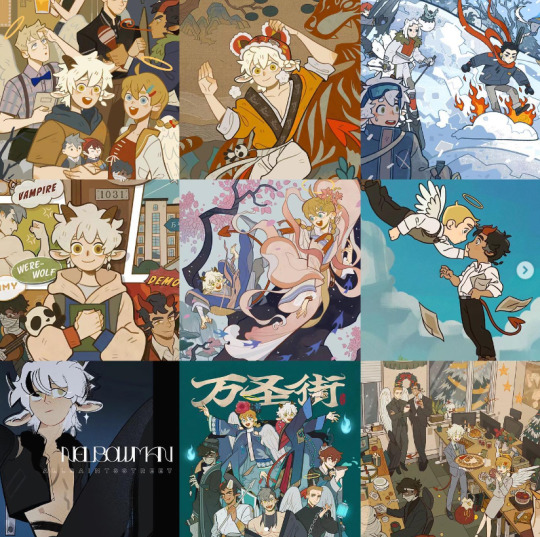
had to screenshot this one on IG ignore the arrow ;w; One of the official illustrators for All Saints Street. The way they draw characters so SHAPED, the composition and the detail!!!
22. When is your prime time to work on your art?
Usually afternoon to evening! I've been trying to avoid staying up too late to draw but this also ends up with me drawing personal stuff at work and forgetting to do my work tasks until it's really late.
25. Based on your recent reference searches, what would the FBI assume about you?

i wouldve probably gotten away with something mild but unfortunately i have the word foot in there so nothing good
2 notes
·
View notes
Text

Wangui Kariuki James is a pixie that currently resides in Celestial Hills and has been a Lunar Cove resident for five years, resurrected Halloween 2022 hoping that third time really is the charm.
ITS THE END OF THE WORLD
GENDER/PRONOUNS: Nonbinary, They/Them
DATE OF BIRTH: January 12, 1968
OCCUPATION: Owner/Designer at Blush Boutique
FACECLAIM: Celeste O'Connor
AS WE KNOW IT, AND I FEEL FINE
SPECIES: Fae
SUBCATEGORY: Pixie
FAE COURT POSITION: High Fae
AGE THEY APPEAR: 25
WELCOME TO LUNAR COVE, KUI KARIUKI JAMES
Trigger Warnings: Murder, Agoraphobia, PTSD
Wangui (known as Kui) James was a bit of an afterthought from the moment they were born, on a snowy December morning in 1967. The James family definitely had enough to handle by the time Kui came along, having just relocated from Chicago to Rockford, Illinois. Their parents balanced work, community, and family in an elaborate juggling act, and if one word described the general attitude of their home, that word would be ‘hectic’.
With two older siblings whose ambitions focused on sports and academics, and a younger one who mostly seemed determined to be the loudest person in every room, they often felt overlooked. Even if there had been early indications of their supernatural origins, in all likelihood they would’ve needed to sprout wings at the dinner table before anyone would pick up on how different they truly were.
In a way it gave them space to try different things—testing personalities the way only an unobtrusive middle child could. Kui slipped between boundaries of identity here and there with ease. They would be playing catch in the park with their big brother’s friends one day, and singing in the back row with their parents’ church choir the next, never drawing too much attention but instead, floating along without disturbing the waters with more than a ripple of their presence. While some would find it lonely, Kui was introverted enough that their solitude and secrecy felt more like a protection than a punishment.
They began to take notice of how presentation affected the way people interacted with them, and an interest in clothing and fashion germinated slowly, along with a natural talent for design and a solidifying of the knowledge that they lay somewhere outside a binary form of gender. Clothing and makeup was something they could use—they could express themselves without saying a word, if they chose, letting their style fill in the blanks of who they were. Fashion and art was where they flourished, spending hours pouring over catalogues and then trying their own skills with a rickety old sewing machine they got off a neighbour. Soon, people began to take notice, and word spread around—if that old coat that doesn’t fit quite right? New dress needed adjusting? Take it to the James kid—no, the other James kid, the quiet one.
As they got older, Kui began to suspect that their innate ability to sense the emotions of others, to copy a complicated stitch after only seeing it once, was something a little more than ordinary. But they’d been used to holding secrets close to their chest by then. With the discovery of their wings and actual invisibility, it became easier than ever to stay out of the way, and curiosity about the world beyond Rockford began to tempt them to take greater risks. This culminated when at the tender age of 19, they hopped a train to New York, to see what they could see of Fashion Press Week in the city, and maybe even stick around if they decided that was where their future lay. They used their invisibility to sneak into show after show, swept up in the glamour of it all, but lacking practice they accidentally dropped it on their way out of a venue. A hand fell on their shoulder and panic set in as someone turned them around, calling them by a name they didn’t know.
The stranger swiftly apologised for the error, but after asking a few pointed questions about things they couldn’t possibly know, took Kui to chat at a nearby diner. Over hushed tones in the back booth the stranger explained that they were both fae—a hidden species capable of being reborn if they were in mortal danger. If they were right (and the resemblance was uncanny) then Kui had previously been a singer, right here in New York—Odette “Odie” Kariuki, a rising star on the scene until one rainy night after their set, they vanished, and were eventually presumed dead.
The fae pointed Kui in the direction of Odie’s old band members, the musicians who used to play together but had since retired. Several of them were supernatural themselves, and one confirmed what they’d all suspected—Odie’s death had come at the hands of hunters.
It was with their blessings, aid, and encouragement, that Kui decided to try and pass themself off as Odie’s long lost child. After all, the band assured them, it’s what Odie would’ve wanted, and that stuff was theirs already, technically. They helped Kui fix up false adoption papers, naming the James’ as their adopted family. As surreal as it was to realize that they weren’t human like the rest of their family, it did answer a lot of unasked questions. Kui added the name Kariuki to their own, as a way to honour their previous incarnation. It was far from a perfect illusion, but a little magic here and there to smooth over questions, and the lie was good enough to hold, at least by 1980s standards. Kui James became Kui Kariuki James, and went from being another face in the crowd, to the mysterious heir of a tragically short-lived 60’s songbird. Although most of Odie’s possessions had been held onto by the remaining members of the band, the label, or sold to various private collectors and fans, at least the royalties were redirected. Suddenly, Kui had the means to follow whatever dream they wanted, a gift from a past life.
But along with this windfall, came nightmares of their previous incarnation’s violent death. Kui’s fears wore at them, and their affection for the bustling city life waned. Every alleyway felt like it held the potential for hidden assailants, waiting just out of sight. They were desperate and mostly sleepless when their old bandmates advised them to check out Lunar Cove, RI.
Here, they began to feel like they could breathe again. The little coastal town was going to be a place where Kui could gather their thoughts and decide how best to go about living as a fae, in light of their previous incarnation’s apparent recognizability. They joined the Court, and felt some measure of protection here, turned back to their designs. Money was no longer the worry it had been, so they opened a shop in Celestial Hills, turning the lower floors into a storefront, and the ones above it into their very own atelier and living quarters. Kui found that their new gift for casting illusions actually made for the perfect design canvas. Blush Boutique became their pride and joy—it wasn’t their own House, far from it, but it was something all their own, and they had centuries to nurture and build their vision.
By 1992, they were very nearly content. Sure, leaving behind the outside world was a tough sell, and they still didn’t know how to feel about their family back in Rockford. But what they had gained—the safety, the community, the truth of their existence—it felt worth it. They’d never felt such a sense of belonging before, not anywhere.
And it should’ve been good. Lunar Cove was safe—they even learned how to lend luck out to those who needed it, and bad luck in a place like this barely felt like much of a risk. When a friend asked, Kui lent a friend more than enough luck to help shake off the blues. If they hadn’t been so generous, maybe things would’ve been different. There shouldn’t have been hunters in Lunar Cove. Kui should’ve seen them, should’ve vanished, should have had enough time to regenerate another time. All of this should’ve been true, but instead they were murdered by hunters. Again.
Or so they’d thought. Maybe fate took pity. Maybe luck was just slow to balance out, and realized it had taken too much from them. The next thing Kui knew, it was nighttime, and someone was reaching for them. Without thinking, Kui shoved them backwards, watched them trip and fall down a flight of steps to land, unmoving, at the bottom. They weren’t aware that the person they’d just killed wasn’t a hunter, or that any time had passed since they were the one being attacked. Reliving trauma repeatedly will do that to a person.
Trembling and shocked, they found their way to the Boutique, only to find the door locked, and when they broke a window to get in, nothing was where it should’ve been. Everything was strange and felt wrong. The atelier was full of things they didn’t recognize, none of their possessions or designs were in the shop. Disoriented and barely coherent, they were found there the next morning, and taken to the Faerie Ring.
With thirty years missing from their life, they woke up to a world entirely different from the one they were born into. Technology moved in leaps and bounds, along with fashion and everything else. Their human parents passed away, their siblings moved and scattered around the country with families of their own. It’s said that a fae will lose their powers if they’re heartbroken, but their abilities seemed to be the only thing left intact. That, and the Boutique, which after the confusion was resolved, fell back under Kui’s ownership without much arguing.
Most days, Kui keeps to themselves, focusing wholly on their work in the atelier, catching up on all the changing trends and the evolution in fashion that they missed. It’s a source of great joy and pride whenever an event goes on, some of the locals come to the Boutique, where Kui does swift alterations or even offers bespoke designs of their own. When they do venture out into town, they’re still in the process of adjusting to this new era, and sometimes it’s easier just to be invisible. The news that hunters are once again terrorizing the town doesn’t help much, leaving them jumpy and untrusting around other people. Displaced from time, pulled back into a world they barely recognize and don’t trust, they don’t know if there’s any safety or peace to be found here—or if there ever truly was in the first place.
#Wangui Kariuki James#fae court member#taken fae#blush boutique#celeste o'connor#celestial hills#all#kui kariuki james#kui james#blush boutique owner
0 notes
Photo

That part of Kui’s beach drawings is A LOT.
Like, of course, Cithis does this because she wants to humilate Pattadol! But wow, talk about an extremely intimate way of doing it, what with spreading suncream being so often portrayed with a sexual lens. And Cithis’ pose, and the expressions! It hits so many shipping notes.
75 notes
·
View notes
Text
Analysis of Laios and how he hugs/interacts with people, pre and post-manga.
Reading body language in real life is basically pseudo-science most of the time, however, these aren't candid photographs of real people I'm analyzing, they are drawings purposefully made by Ryoko Kui to tell us something about Laios and his relationships with other characters.
These illustrations are designed on purpose to communicate information. So what do I think they say?
Here's the illustration of how things are at the start of the manga:
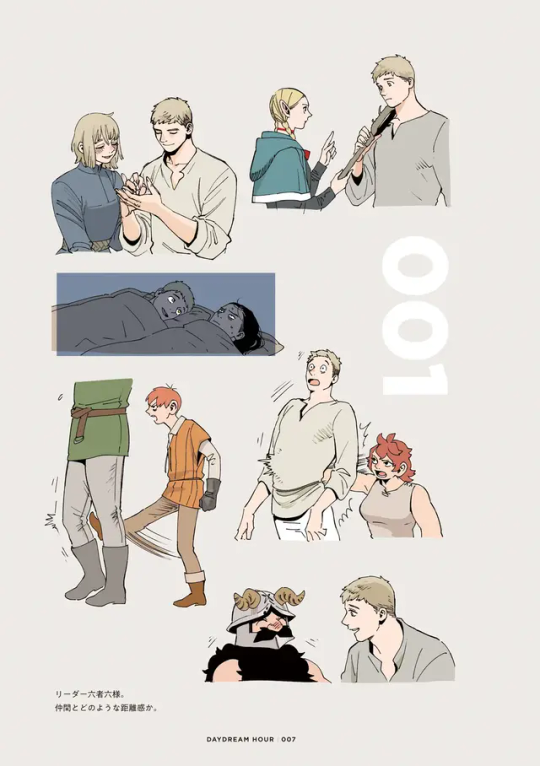
NAMARI AND CHILCHUCK
They're both rough towards Laios, expressing displeasure with him, using violent physical touch to get his attention or punish him for something.
TOSHIRO
His reaction to Laios is totally passive. He isn't turned towards Laios, but he isn't turning away either. He's staring up into space with a look of discomfort, suggesting he wishes Laios would leave him alone... But that he is too polite to openly reject him.
We know this is partially a cultural issue: because Toshiro is Japanese, he considers it catastrophically rude to tell someone "no" in a blunt way. He is trying to communicate his discomfort and disinterest to Laios, but Laios isn't understanding Toshiro's signals.
Meanwhile, Laios is turning his whole body towards Toshiro, his eyes are wide open, he's smiling. He's very eager to interact, in a way that he isn't with any other character on this page except Falin.
MARCILLE
They are having a neutral interaction. Neither of them seems excited or interested in each other, but they are talking seriously. Marcille is gesturing at Laios in a way that seems scolding, they are standing at a polite distance, and Laios is standing at his full height, perhaps even leaning/straining away from Marcille slightly. There is a physical object (Marcille's staff) acting as a barrier, and it's physically pushing Laios away from her.
But it is worth noting that he has his hand on the staff, suggesting that he's not letting himself be pushed away any further, that he's having a reciprocal interaction with Marcille, not a passive one where he just stands there and gets lectured. Laios is participating and engaged.
FALIN AND SENSHI
The only people having unambiguously positive interactions with Laios on this page, which makes sense since they are the two people who are the most friendly towards him at the start of the manga.
Laios and Falin are touching hands, smiling and their bodies are turned towards each other, showing enthusiasm and a mutual interest. This is less intense than the hug in the post-manga illustrations, which maybe suggests that there's something distant and unresolved between them here, like resentment and guilt.
Laios and Senshi are closer to each other than Laios and Marcille. Laios is sitting or crouched down to get closer to Senshi's height, and they are both smiling and turned towards each other. Senshi may even be laughing!
Here's the "post-manga" image...

What a huge difference!
All of these interactions are basically positive, so I'll just go left to right, top to bottom. Also for some of these, we can't see Laios' friends full reactions, so I'll focus on what we can see, and how Laios is behaving.
SENSHI
They share a gentle hug. They both have their arms wrapped around each other, so the desire to touch is mutual. Laios bends to reach Senshi, and has a calm, content smile on his face while they hug. Laios rests his head on top of Senshi's head, showing trust and intimacy and a desire to be physically even closer to Senshi than just hugging. Senshi isn't pulling away, so I think that's a good indicator that he doesn't mind it, and possibly even likes it!
Which is a big change from how he felt violated by Laios touching his chest earlier in the manga, even though Laios was trying to heal him... I think Senshi isn't someone that easily lets others touch him, so this is a big improvement.
CHILCHUCK
The size difference makes this hug awkward, but that's not the only reason! Laios has both hands on Chilchuck and he is bending down in order to reach him, suggesting that he wants to embrace his friend, however Chilchuck is not straining to reach Laios, and he is only using one hand to touch him, suggesting that Chilchuck doesn't want to embrace too closely. Chilchuck is willing to allow a hug, and he is willing to touch Laios back, but he doesn't want it as much as Laios does.
I think Laios is aware of this, because he isn't trying to push the hug to a higher level of intensity. He's holding back to the level he thinks Chilchuck is comfortable with.
MARCILLE
They share a happy, but not overly intimate hug. Their chests and bodies are pressed together, but they are turning their heads away from each other.
Laios' hands are resting side by side on Marcille's back, and it seems like she is hugging him back in a similarly loose way. His arms are not overlapping, and they aren't squeezing or grabbing each other, just holding on lightly while pressing their chests together.
TOSHIRO
What a fascinating set of drawings!
I'm going to assume that the color drawing is what happens first, and the black and white line drawing is what happens afterwards, solely because if the black and white drawing is meant to just be Laios' fantasy of hugging Toshiro, then surely he would imagine Toshiro hugging him back enthusiastically, and not a more passive reaction like Kui drew.
Kui wrote a note here to remind readers that hugging is not considered normal in "the East", where Toshiro is from, to give context to why the character seems so uncomfortable.
Laios is approaching Toshiro at high speed, arms open and reaching for Toshiro, eyes wide, with a happy expression. He clearly wants to wrap Toshiro up in a big, enthusiastic hug.
Toshiro is sweating with discomfort, and he has a hand pressed against Laios' chest, attempting to stop him… However, the arm is not extended and his elbow is bent at an acute angle, and it looks as if no force is being applied. Toshiro perhaps feels a need to offer a token protest, but he isn't really trying to stop Laios.
In the black and white hug drawing, Laios has both arms wrapped tight around Toshiro, much tighter than Senshi, Chilchuck or Marcille, and he's pressing their bodies together and resting his head on Toshiro's shoulder. He's turning his face towards Toshiro's neck, and smiling serenely.
Toshiro's body is stiff, he's sweating, and his arm is held at a rigid 90 degree angle… But he isn't using it to push Laios away, just holding it uselessly at his side. Perhaps he is half-way towards returning the hug, thinking about lifting his arm a little higher and resting his hand on Laios' back, but he isn't sure if he wants to do that yet.
Toshiro is bending his body towards Laios, and allowing himself to be pressed against the other man. He's staring out into space with a neutral expression that suggests either discomfort or surprise. I think we're meant to understand that he has given up fighting against the foreign, offensive hug, realizing that it isn't offensive for Laios, and therefore it might be okay to allow it...and it might actually be more offensive if he rejected the hug.
FALIN
Falin has thrown herself at Laios with considerable force, and Laios has his arms overlapping across Falin's back. They are both squeezing each other tightly with their arms, and even Laios' hands are gripping Falin tightly. There is an overjoyed look on Laios' face, and I think this embrace shows how Laios has healed through the course of the story.
KABRU
Since Kabru is one of Laios' newest friends, it makes sense that the hug would be the least intimate.
The two of them have a complicated relationship in the manga, but the complete world bible shows that Laios has finally accepted that Kabru is genuinely his friend and not just trying to use or manipulate him. He's made an effort in the post-canon to reach out and try to be Kabru's friend in return, and Kabru has forgiven Laios for not listening to him in the past.
Kabru is turning his body away from Laios, which puts his shoulder towards Laios' shoulder at a perpendicular angle, forcing distance between them. Laios is fully facing Kabru, and has one arm behind his back, a hand resting on Kabru's shoulder, and another hand resting on his chest. The hand on the chest is attached to an arm that is bent at an obtuse angle, holding Kabru at a distance, with no indication that he is trying to pull Kabru in. Both hands are relaxed, like in the Marcille hug, indicating that Laios' grasp is loose.
This arm position is pretty unusual for an embrace. It allows Laios to keep Kabru at a distance where he can see him, and control where he moves, and how close he's able to get to Laios… and Kabru isn't returning the hug in any way, instead allowing himself to be touched and held in place.
Their bodies aren't pressed together, and Kabru's arm is down at his side, neither encouraging Laios nor pushing him away.
Laios has a big smile on his face, and he looks enthusiastic. Kabru on the other hand has a calm smile. In my opinion his expression is less enthusiastic than Marcille's.
I think Laios can't tell how Kabru feels about the hug, and so he's holding himself back. He's not blinded by emotion like he is with Toshiro, so he's not flinging himself at Kabru… And because Kabru is such a new friend, Laios is also probably hesitant to get too close to him.
There may also be some lingering trust issues, if Laios still isn't completely certain if Kabru genuinely likes him or not. Laios has often had trouble telling if people really like him, or if they are just being polite (Toshiro), or using him (former party members), so it makes sense that it would take awhile for him and Kabru to become truly comfortable with each other..
#dungeon meshi#delicious in dungeon#kabru#laios touden#falin touden#marcille donato#senshi of izganda#chilchuck tims#toshiro nakamoto#shuro dungeon meshi#theories#my stuff
463 notes
·
View notes